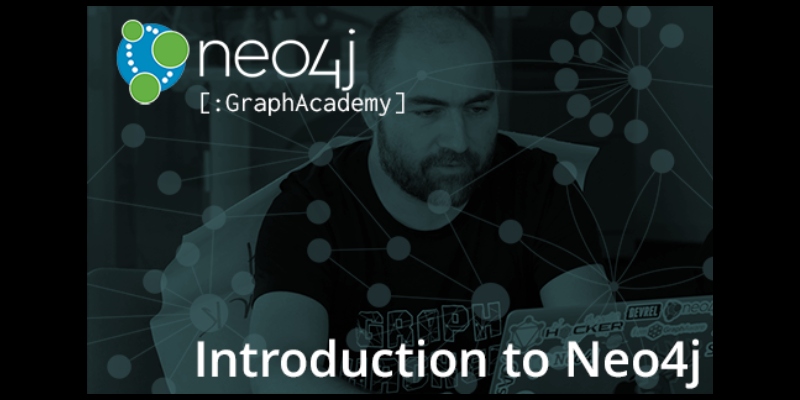Because we believe that graph databases are the future of backend software development, we wanted to make it easier and simpler than ever to get started on your graph journey. That’s why we’ve just completed a much-needed overhaul of the Introduction to Neo4j online training course.
This free Neo4j training course lays a solid foundation for your graph technology journey, giving you all of the knowledge you need to build applications with Neo4j, including how to write Cypher queries. We’ve designed the course for beginner students to the Neo4j graph database, and the online training is perfect for developers, architects, DBAs, data scientists and other data analysts.
Elaine Rosenberg is Neo4j’s Principal Curriculum Developer and has over 25 years’ experience developing technical training for a variety of database platforms. It was her task to bring much-needed updates to the Introduction to Neo4j online training course.
I asked Elaine to fill us in on what she’s been up to:
Why did you decide to revamp the Introduction to Neo4j online training course?
Elaine: We wanted to provide comprehensive instructional material that introduces users to Neo4j and how to use it, including best practices.
The previous online course didn’t provide students with enough content for learning Neo4j, and it did not have as many hands-on exercises. The new course does.
What are some of the biggest changes to this training course?
Elaine: The previous course was about two hours of training. The new one is about eight hours.
It includes 16 hands-on exercises and can be completed in Neo4j Desktop or in a Neo4j Sandbox. There are no longer any Browser simulation widgets. All exercises are done live, and at the completion of each lesson, there’s a short quiz. If the student completes all quizzes correctly, they are automatically emailed a certificate of completion.
If you could highlight one thing about the updated training course that a new student would benefit from knowing beforehand, what would it be?
Elaine: A new student should be able to either install Neo4j Desktop on their machine or create a Neo4j Sandbox so they are able to perform the hands-on exercises of the course.
Although prior programming experience is helpful, the student doesn’t need any programming experience to complete the exercises of the course.
What’s one good reason why someone should not skip over this introductory course?
Elaine: This course is essential to becoming a Neo4j Certified Developer.
In order to pass Neo4j certification, you’ll also need to take the Neo4j in Production course, which goes over deployment, administration and clustering.
Thanks so much, Elaine. Still need more info before you’re ready to dive into the online training? We’ve got you covered:
Introduction to Neo4j – Course Description
This course introduces you to graph databases and how to use Neo4j in key use cases. You will learn about the differences between a relational data model and a property graph model.
Next, you’ll learn about the components of the Neo4j Graph Platform and how to set up your development environment for learning Cypher, the graph query language.
The main focus of this course is to learn Cypher. You will learn through hands-on exercises how to write Cypher queries to retrieve data from a Neo4j database. You will also learn how to write Cypher statements to create, update and delete (CRUD) data.
Finally, you will learn how to add constraints and indexes, how to monitor Cypher queries and how to import relational CSV data into Neo4j.
After taking this course, you’ll be able to:
- Understand the basics of a graph database and the property graph model.
- Set up your development environment with Neo4j Desktop or a Neo4j Sandbox.
- Write both basic and advanced Cypher queries, including control of query processing.
- Write Cypher statements to create, update and delete (CRUD) nodes, relationships and properties in a Neo4j graph database.
- Create constraints and indexes.
- Import CSV data into Neo4j.
Register for our free online training class, Introduction to Neo4j and you’ll be a master of graph technology in no time.
Sign Me Up





